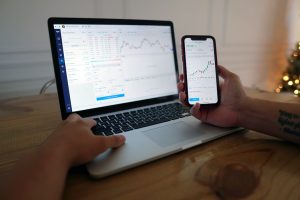Forex trading is an exciting and lucrative activity for those who have the right knowledge and skills. However, entering a forex trade requires more than just intuition and guesswork. It requires a sound understanding of the market, the ability to analyze data, and the discipline to execute a trade plan consistently. Knowing when to enter a forex trade is one of the most critical aspects of successful trading. In this article, we explore some key factors that determine the right time to enter a forex trade.
Market Analysis
Before entering a trade, it’s essential to analyze the market to determine the trading opportunities available. This analysis involves studying the economic indicators, technical analysis, and fundamental analysis of the currency pairs you are interested in trading. Economic indicators such as Gross Domestic Product (GDP), inflation rate, and interest rates can provide valuable information about the state of the economy and the future direction of the currency. Technical analysis involves studying charts and patterns to identify trends, support and resistance levels, and market sentiment. Fundamental analysis involves analyzing the factors that affect the currency’s value, such as political events, economic policies, and global events.
Trading Plan
A trading plan is a set of rules and guidelines that a trader follows when entering a trade. It outlines the trader’s goals, risk tolerance, trading strategy, and entry and exit points. A trading plan is essential because it helps traders avoid impulsive decisions based on emotions and ensures that they stick to a consistent trading strategy. When creating a trading plan, traders should consider factors such as their available capital, their trading style, and their risk management strategy.
Risk Management
Risk management is crucial in forex trading because it helps traders protect their capital and minimize losses. Risk management involves setting stop-loss orders to limit losses, diversifying your portfolio, and using leverage wisely. Traders should also consider their risk appetite when entering a trade. A trader with a high-risk tolerance may be willing to take more significant risks, while a trader with a low-risk tolerance may prefer to take fewer risks.
Market Volatility
Market volatility refers to the rate at which the market price of a currency pair fluctuates. High market volatility can provide trading opportunities for traders who are willing to take risks, while low market volatility can make it challenging to find profitable trades. Traders should be aware of the market volatility when entering a trade and adjust their strategy accordingly. For instance, traders may want to use a scalping strategy during high volatility to capture small price movements or use a swing trading strategy during low volatility to capture larger price movements.
Trading Sessions
The forex market is open 24 hours a day, five days a week, and traders can enter a trade at any time. However, different trading sessions have different characteristics, and traders should consider the trading session when entering a trade. For instance, the Asian trading session is less volatile than the European or American trading sessions, and traders may prefer to use different strategies during each session.
Conclusion
Knowing when to enter a forex trade requires careful analysis, disciplined execution, and effective risk management. Traders should analyze the market, develop a trading plan, manage their risk, consider market volatility, and take into account the trading session. By following these factors, traders can increase their chances of success in forex trading. It’s important to note that forex trading involves risks, and traders should only risk capital that they can afford to lose. As with any investment, traders should seek professional advice before entering the forex market.





